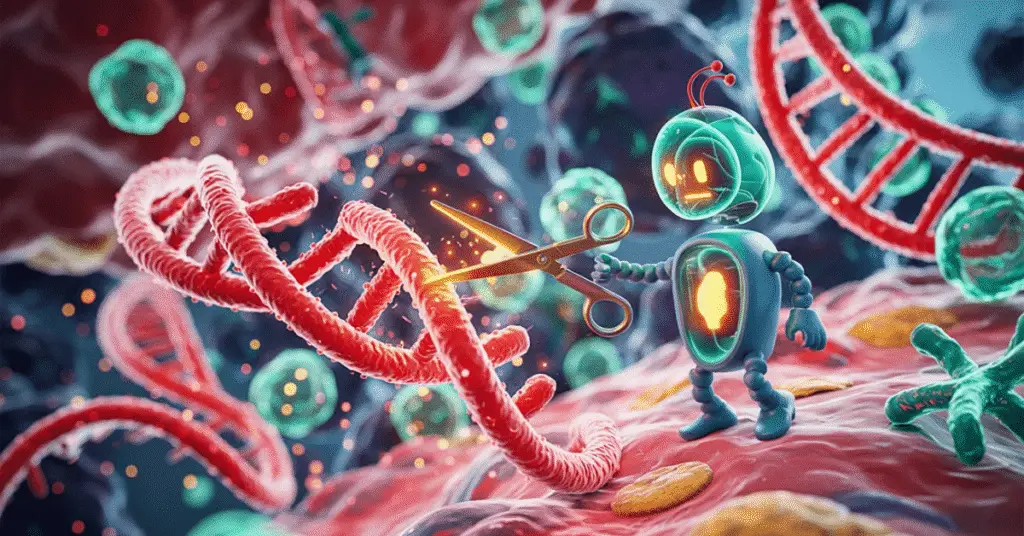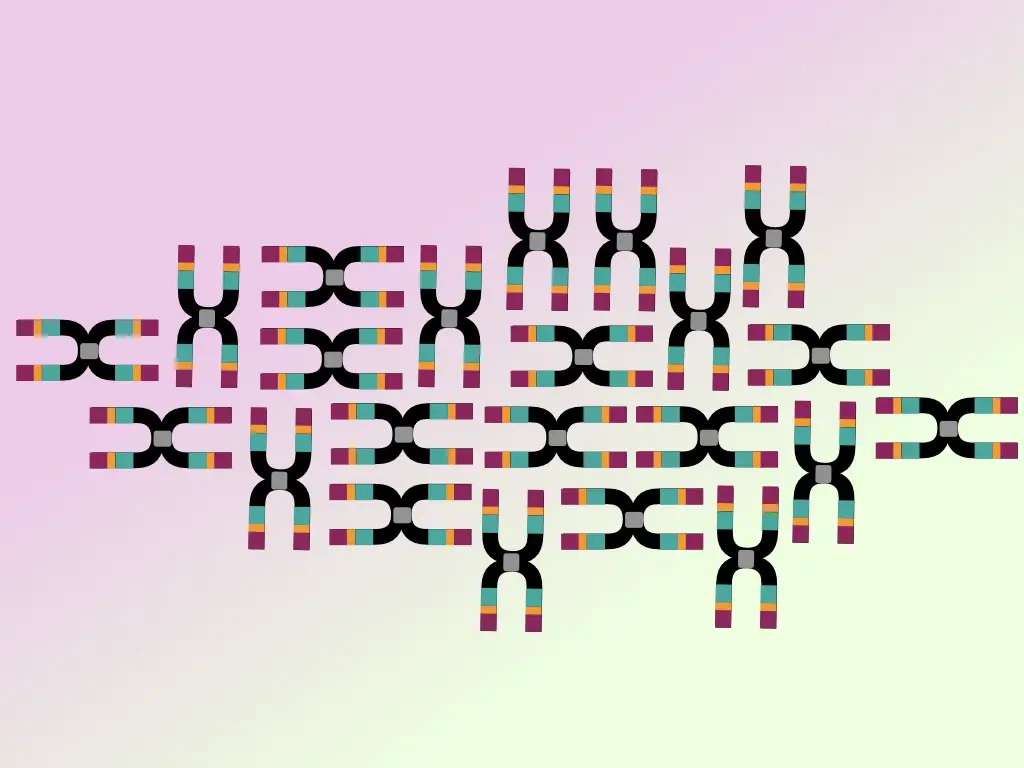“Small interfering RNA binds to the mRNA and performs gene silencing. Learn the concept, structure, function and applications of siRNA in this article.”
The siRNA and other smaller double-stranded RNAs gained attention after V. Amrobs and G. Ruvkun won the 2024 Nobel Prize in Physiology or Medicine for their finding on miRNA.
RNA is a nucleic acid but not a genetic material (excluding retroviruses). The common form of RNAs, we know, is the single-stranded mRNA, and other rRNAs and a tRNA. Their function, collectively, is to synthesize a protein.
They regulate the journey of a gene from the cell nucleus to the cytoplasm, ensuring proper protein translation at a ribosome. That’s what we know about RNAs! But do you know shorter double-stranded RNAs are still present in our cells?
And if that’s not enough, they also play a significant role in gene expression regulation and cellular defense.
Want to learn more?
In this article, I will explain the structure, function and importance of one such category, double-stranded RNA— small interfering RNA.
Stay tuned.
| Abbreviation | Full name |
| mRNA | Messenger RNA |
| miRNA | microRNA |
| shRNA | Small hairpin RNA |
| siRNA | Small interfering RNA |
| RNAi | RNA interference |
| pri-miRNA | Primary microRNA |
| pre-miRNA | Precursor microRNA |
| RISC | RNA induced silencing complex |
| Ago | Argonaute protein |
Key Topics:
What is siRNA?
siRNA is stands for small interfering RNA. It belongs to the class of short, double-stranded and smaller RNAs.
Usually, the presence of dsRNA is a sign of danger! It can’t be synthesized in our genome, meaning it is of foreign origin, possibly viral infection. When this happened, our defense mechanism activated.
It immediately starts working, chops down the dsRNA, and avoids its participation in the transcription process. As a token of success, it allows several shorter dsRNA to remain in the cell.
During another infection cycle, these dsRNA help to identify and destroy the foreign RNA. This sequential and highly regulated process will be discussed later in this article.
Eukaryotic cells usually do not rely on siRNA, but on miRNA (MicroRNA) for RNA interference. However, several siRNAs are also produced, but in a very negligible amount.
Scientists studied this mechanism and developed synthetic— “virus look a like” short RNA for inducing gene silencing via RNA interference.
History of siRNA:
A few important milestones in the field of RNA interference have been discussed in this section.
In 1998, Fire A and Mello C performed gene silencing by injecting the siRNA into the C. elegans.
siRNA was first characterised in plants by Baulcombe D and coworkers in 1999. However, gene silencing was first identified by Napoli et al. in 1990.
Continuing smaller advancements in the field of RNA interference, in 2024, the Nobel Prize was awarded in this field for microRNA characterization.
Structure of siRNA:
Unlike the cellular RNAs, the short or small interfering RNAs are artificially synthesized, double-stranded, 20 to 25 or thereabout it size and employed for targeted gene silencing.
It is exogenous in nature (either prepared artificially or injected by viruses!) and used to halt protein synthesis. Importantly, it possesses a classic characteristic of a dinucleotide overhang on the 3’ OH end.
Among the double-stranded, one strand is known as the guide strand and another is known as the passenger strand. They are also known as sense and antisense strands, respectively.
Both strands play a critical role during the RNA interference process. We will discuss this later in this article.

Isn’t that a simple structure! Let’s talk about the function.
Function:
siRNA has a key role in RNA interference— the gene silencing.
However, the its main function is to prevent the integration of foreign (viral) in our genome during infection. Meaning that it protect against infection.
The well-versed gene silencing mechnism prevents the synthesis of protein from the mRNA by either binding with the mRNA or guiding it to interference. Scientists use this targeted approach for gene expression studies and regulation.
The whole process is explained here in a step-by-step manner.
Once the dsRNA, either from the artificial or exogenous infection sources, inserts into the cell, cellular RNase comes into action.
Our cellular machinery identifies it as a “foreign source” and disallows its participation in the cellular protein synthesis. A special type of RNase, known as the ‘Dicer’, takes the charge as a first line of defense.
Having the tetrameric cofactor magnesium ion within its catalytic core, Dicer specially cleaves the foreign dsRNA to produce the dinucleotide overhang.
Now tell me, what’s the main characteristic of the siRNA? — It’s the dinucleotide overhang, right!
It is then loaded on the protein complex RISC— RNA-induced silencing complex. RISC uses the guided RNA strand while the passenger strand is usually degraded. Note that RISC uses both exo and endonuclease activities for cleaving the RNA.
Using this guided strand, it starts scanning for the other double-stranded RNA molecules complementary to the guided siRNA strand, finds them and destroys them in the same manner.
So we can say, the cell itself prepares the antiviral agent— siRNA using the Dicer and uses it against infection.
How smart our cellular mechanism is!
Now, scientists have studied the same mechanism keenly and found a way to promote targeted gene silencing. Scientists prepared artificial siRNAs. But here is the twist.
Instead of the exogenous RNA, it has been employed to silence our own mRNA and halt gene expression. And that’s what we want.

Scientists developed gene-specific siRNA, incorporated into the target cells or tissues, artificially. Then the cell processes it using the same mechanism, halt gene expression and silence it. The complete molecular mechanism of RISC-guided RNA interference has been explained in our previous article. You can check out the article to completely understand it.
Applications of siRNA:
Small interfering RNAs have been extensively employed in therapeutic studies and research. Scientists are also planning to develop siRNA-based treatments or therapies against various diseases and cancer.
The most common and primary use of siRNA is in the targeted gene silencing, known as gene knockdown. This helps to decipher the function of a gene, thereby extensively applied in cancer research.
siRNA-mediated gene silencing is used against oncogenes to suppress their activities and slow down the tumor growth. Not only that, this also helps to improve the chemotherapy outocomes.
It is also used as an antiviral agent against viruses like HIV, hepatitis and influenza. It can prevent viral replication and knock down essential viral genes.
Scientists are extensively employing siRNA in therapeutic development. In this, the harmful disease-causing genes are silenced using therapeutic synthetic siRNA.
In addition, it is also used in pathway studies, analysis and validation, for instance, cytokinesis, insulin signaling and cellular defense mechanisms.
The present synthetic RNA is further used in gene expression, regulation and epigenetic studies and research.
Lastly, scientists are looking for its applications in the field of functional genomics, agriculture, medicine, neurodegenerative diseases, and gene redundancy studies.
Interestingly, in 2001, Elbashir et al. used the synthetic siRNA molecule for artificial gene silencing.
Advantages and limitations:
| Advantages | Limitations |
| Highly specific | Off-target effects |
| Least side-effects | Delivering is challenging |
| Easy to design and use | Temporary effect |
| Works in a wide range of organisms | Can trigger an immune response |
| Wide range of applications | Stability issues |
Challenges in siRNA:
Scientists are looking to use siRNA in medicine and research, however, there are several challenges they face often.
First, and most important problem is the length of the siRNA. Shorter length fails or induces off-targeting effects, while longer siRNA induces an immune response and results in serious side effects.
siRNA mediated silencing is temporary and tissue-specific. Meaning that it is restricted to a particular cell type or tissue. And thus, it can’t be employed directly to treat hereditary diseases.
Delivering the siRNA is the biggest challenge scientists have right now! It’s a comparatively larger molecule and can’t be directly passed through the cell wall or membrane.
However, nanoparticle-mediated siRNA delivery showed some promising results.
Off-targeting leads to the silencing of other mRNA and produces adverse effects.
siRNA-mediated gene therapy also faces stability issues, for instance, nucleases in the blood easily degrade it and nullify its effect.
The viral vector-mediated siRNA delivery system results in toxic side effects and infection.
Wrapping up:
Much like CRISPR, siRNA is also a promising gene therapy tool available in the future. Although it is simple to design and use, it has to face several serious challenges.
Scientists are looking for its applications, particularly against various types of cancer. Interestingly, several siRNA-mediated therapies are under clinical and FDA approval stage and will be available shortly for use.
I hope you enjoyed reading this article. Do share and subscribe to Genetic Education.
Resources:
- Dana H, Chalbatani GM, Mahmoodzadeh H, et al. Molecular Mechanisms and Biological Functions of siRNA. Int J Biomed Sci. 2017;13(2):48–57.
- The molecule of the month; Small interfering RNA.


